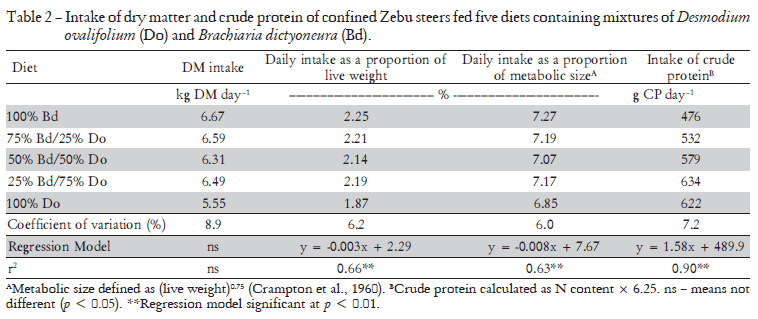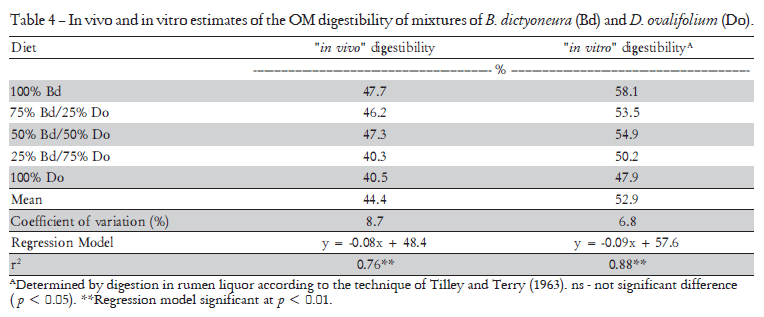A key contribution to study the cycling of nutrients in soil/plant/animal systems is the evaluation of the consumption of forage and their nutrients by cattle. The objective of this study was to test techniques to evaluate faecal production, in vitro digestibility, forage consumption and the proportion of legume in the acquired diet. Five Zebu steer calves were confined and fed five diets of different combinations of Brachiaria dictyoneura and Desmodium ovalifolium. All quantities of faeces were collected per animal and these values were found to compare favourably with those derived from using the chromium oxide technique. In vitro digestibility ranged from 7 to 10% higher than the actual in vivo digestibility. Faecal samples from steers fed with diets with 25% or more of grass in the mixture were found to be depleted in δ13C between 1.7 and 2.1‰, but no depletion was observed when the diet was 100% D. ovalifolium. There was a positive linear regression (r² = 0.97***) of the δ13C of the diet with the δ13C of faeces, but if the acquired diet contained a very high proportion of legume, the legume content could be underestimated by as much as 10%. None of the internal indicators, such as lignin or ash content of the diets, were useful to predict feed intake, but the chromium oxide external indicator performed satisfactorily. The 13C analysis of the faeces was an effective predictor of the proportion of the legume in the consumed diet.
Brachiaria dictyoneura; Desmodium ovalifolium; 13C abundance; digestibility; forage intake












